🧭 Two nights in small towns: Ribe, Ebeltoft, Skagen — cosiness without crowds
Christmas in Denmark is not just Copenhagen with Tivoli and fairs 🎄. In historic towns and seaside villages, winter feels different: fewer people, more silence, old streets, lights in the windows and the sea without crowds.
The ‘two nights in a small town’ format is suitable for those who want to recharge their batteries but are not ready for a long holiday or complicated logistics.
Ribe, Ebeltoft and Skagen offer three different scenarios: historical, museum-seaside and ‘at the edge of the map’ — with northern light and wind.
🧱 City atmosphere: history, museum cosiness and northern light
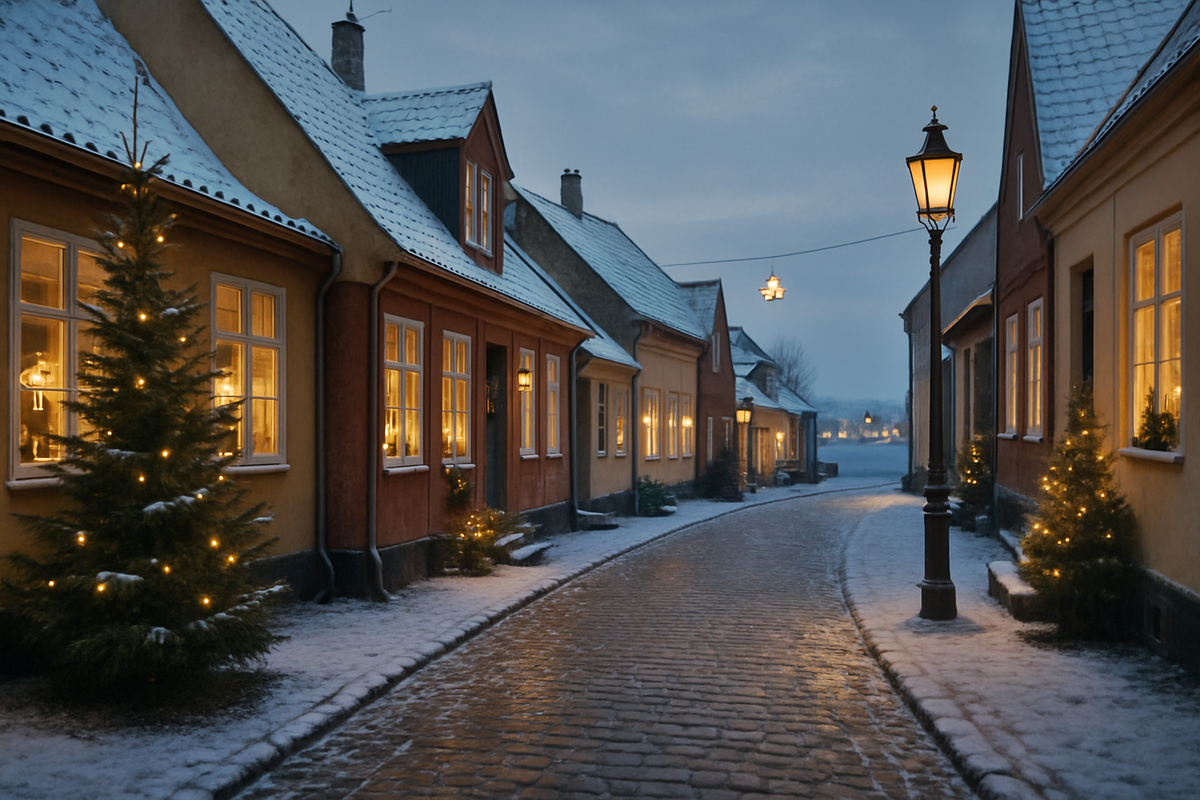
🕍 Ribe: the oldest Denmark and a Christmas classic
Ribe is often called the oldest city in Denmark: a cathedral, cobbled streets, old houses and a compact centre that is easy to walk around.
In December, the city revolves around the cathedral and the central square: Christmas lights, small weekend fairs, concerts and chamber events.
In winter, the scenario is simple: slow walks, the cathedral, a couple of museums, cafes — and the feeling that you have stepped into ‘old Europe’, but without the tourist buses.
🌊 Ebeltoft: a seaside museum town
Ebeltoft is a cosy town hall town by the sea with a glass museum, the frigate Jylland and the creative cluster Maltfabrikken.
Even in winter, key museums and cultural spaces remain open, often with small Christmas or winter programmes for families.
The format of the day: a centre with low houses, a short walk to the water, one or two museums and coffee in a warm room while outside it is a wet Danish December.
🌬️ Skagen: the far north and winter ‘in the wind’
Skagen is the point where two seas meet, and you can feel it even in winter: the light, the wind, the long beaches and the harsher weather.
In the low season, there are fewer tourists and accommodation is often cheaper, but the days are shorter, the wind is stronger, and many seasonal services are closed.
This is no longer a ‘fleeting weekend’ but a mini-trip: it's worth going here if you want a northern picture — the sea, empty beaches, museums and art galleries.
🚆 Logistics without a car: how much time to allow
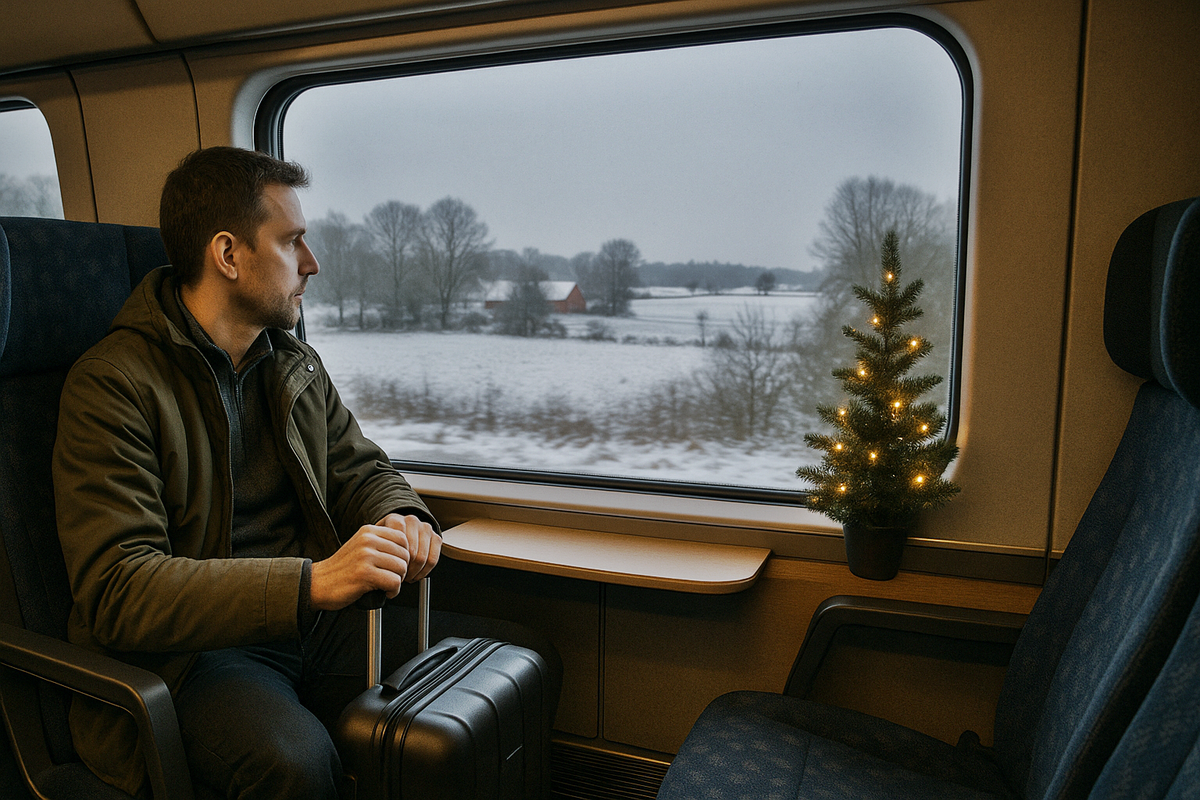
To ensure that a two-night trip does not turn into ‘two days on the road’, it is important to understand the approximate logistics ⏱️.
🗺️ Comparative table of travel times from Copenhagen
| 🏙️ City | 🗺️ Route format (approximate) | ⏱️ Travel time one way* | 💬 Comment |
|---|---|---|---|
| 🏰 Ribe | Train via a major hub (often with one change) | ~2 h 45 min–3.5 hours | Realistic for a 2-night stay |
| 🌊 Ebeltoft | Train to Aarhus/Randers + bus to the town | ~4–4.5 hours | Slightly more complex in terms of connections |
| 🌅 Skagen | Train to Aalborg/Frederikshavn + train to Skagen | ~6–7 hours | Makes more sense as part of a longer trip |
*The exact time depends on the flights and transfers you choose; always check the winter schedule and public holidays in advance.
🕒 Key principles for planning your trip
- Leave in the morning, not in the afternoon: if you start after 12:00, the first day can easily turn into ‘we arrived in the dark, everything is closed’.
- Allow extra time for transfers in winter: delays, slow connections and bad weather are not uncommon in December and January.
- For Skagen for two nights without a car, it's worth asking yourself if you're prepared to spend 12-14 hours over two days just travelling.
🏡 Where to stay and what's actually open in winter
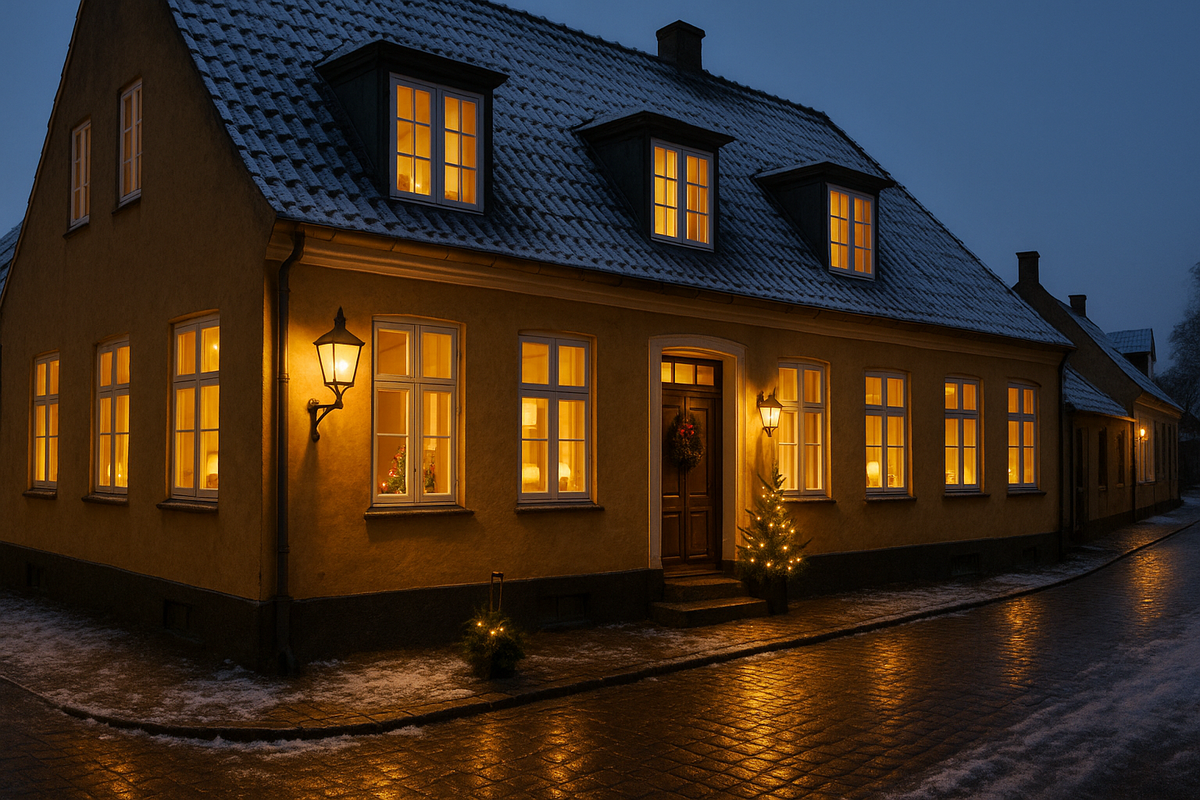
🛏️ Accommodation: small hotels and guest houses
Small towns do not have an endless choice of chain hotels — focus on:
- small hotels and B&Bs;
- guest houses in historic buildings;
- apartments with kitchens (convenient in winter when some cafes are closed).
In winter, there is often less choice than in summer, but at the same time:
- in Skagen and other resort areas, prices can be significantly lower than the high summer rates;
- around Christmas and New Year, on the contrary, there is peak demand and limited choice — it is better to book in advance.
📅 What is open in Ribe in winter
- The cathedral and main museums are open, but usually on a reduced schedule (shortened hours, closed on certain days).
- Christmas activities are focused on Advent: fairs and events are mainly held on weekends until 24 December.
After Christmas, life slows down: the lights, architecture and a couple of reliable cafés/restaurants remain.
🏺 What is open in Ebeltoft and the surrounding area
- The Glass Museum, the frigate Jylland, Maltfabrikken and some cultural venues are open all year round, sometimes with separate winter or holiday programmes.
- In the Djursland region, some parks and museums operate on a schedule during the winter season; you need to check specific days and hours.
This is a good option if you want a balance: the sea, the old town and a couple of ‘indoor activities’ in case of wind and rain.
🌊 What is open in Skagen in winter
- Museums and galleries associated with Skagen artists are usually open, but on a winter schedule.
- The main ‘assets’ — nature, Grenen, lighthouses, long beaches — are available all year round, the only question is whether you are prepared for the wind.
Fairs and ‘mass’ events are more limited here than in cities further south, but there is plenty of peace and space to spare.
📅 The ‘two nights’ scenario: how to fit in three days without rushing
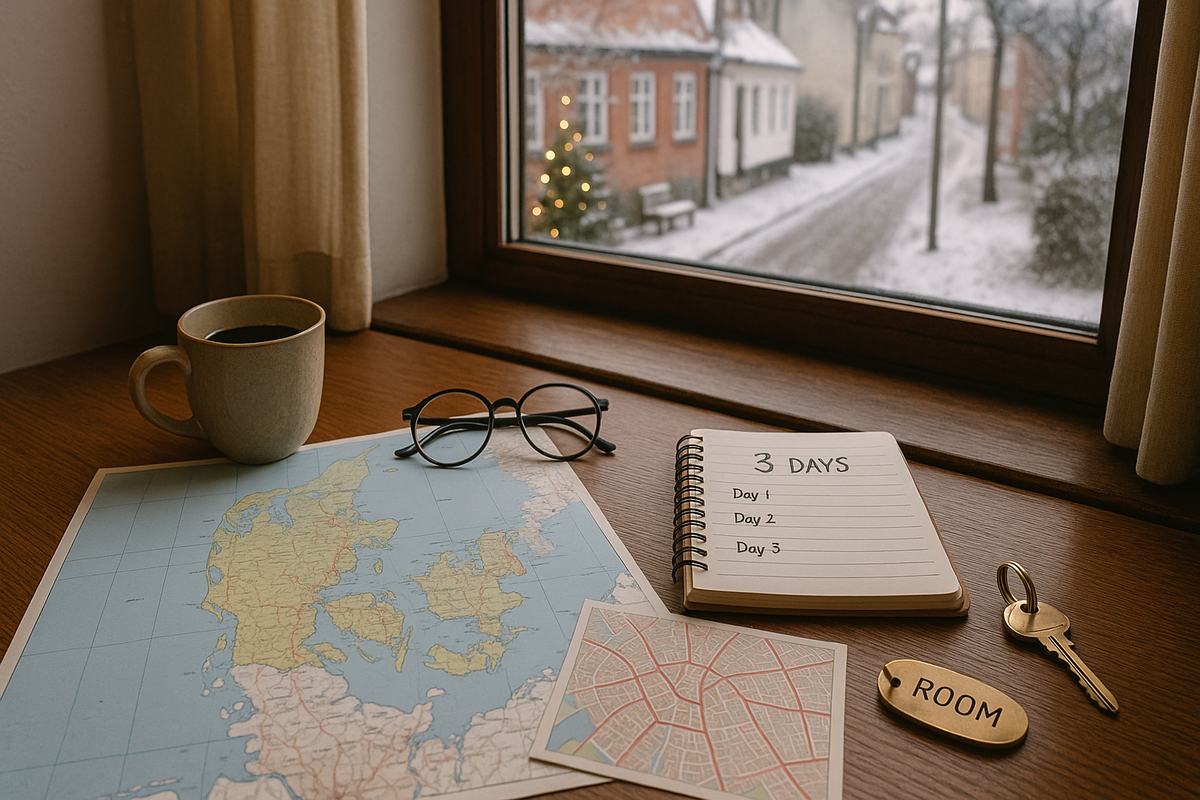
The ‘2 nights’ format is not about ‘doing everything’, but about taking a breather and enjoying a couple of carefully chosen highlights.
🧳 Day 1: travel and getting to know the city
- Morning: departure from Copenhagen/another city no later than 9–10 a.m.
- Day: check-in, tea/coffee, walk around the centre — Ribe Cathedral, the old town hall and the waterfront in Ebeltoft, the centre and harbour in Skagen.
- Evening: early dinner at one of the tried and tested places, a leisurely stroll, return to the hotel — without trying to ‘see the whole city in one evening’ 🌙.
🏛️ Day 2: museums and walks
- Ribe: cathedral, local museums, walk through the old streets and, weather permitting, a short trip to the coast or the Wadden Sea.
- Ebeltoft: one or two museums (glass, frigate, Maltfabrikken), lunch and a walk to the sea or through the quiet streets with low houses.
- Skagen: trip to Grønnen, lighthouses, galleries, walk along the sea, taking into account the wind and daylight hours.
In the evening, hygge again: dinner, perhaps in a different place, and lively conversation rather than rushing through a checklist of sights.
🚉 Day 3: a short walk and the journey back
- Morning: a light walk, another coffee shop, a last look at the water or the cathedral.
- Day: departure back with extra time for transfers and possible delays.
It's better to return to Copenhagen a little earlier and walk calmly to the hotel/airport than to spend the evening in a crowded train or taxi.
💶 Budget: what to budget for and where hidden costs arise
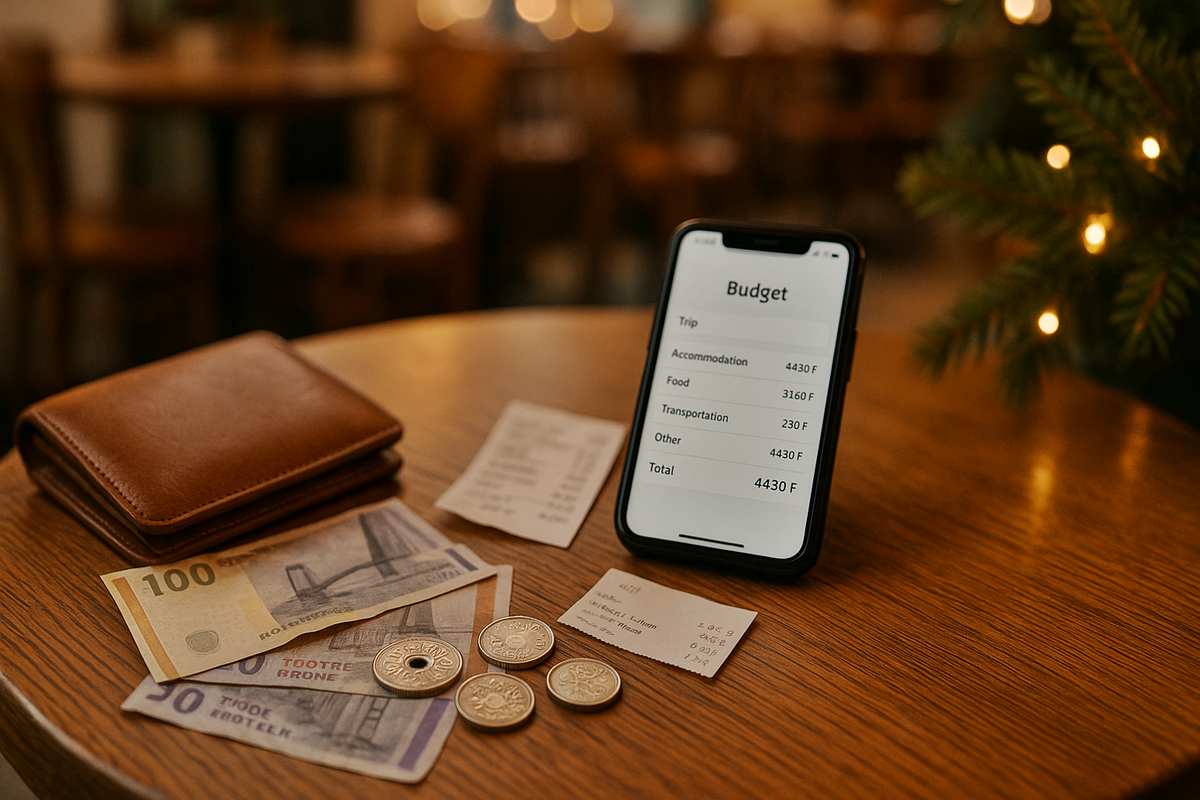
💸 Transport
- Ribe — average scenario: train ticket for ~3 hours one way, standard Danish price level.
- Ebeltoft — train + bus: ‘complex ticket’ logic, sometimes a little more expensive due to combined segments.
- Skagen — the most time-consuming and often the most expensive route (several segments, 6–7 hours, seat reservations possible).
If the trip is short, it makes sense to calculate the round trip right away and compare it with the ‘two nights in Copenhagen + day trip’ option.
🏨 Accommodation
- In the low season (except for the holidays themselves), prices in small towns are often lower than in the summer.
- In Skagen in winter, you can find a good hotel at a more reasonable price, but there may be a separate peak during Christmas and New Year.
- It makes sense to budget for a quality, but not luxury, option: a warm room and a good breakfast in winter are more important than another museum pass.
🍽️ Food and entrance tickets
- In small towns, daily expenses are often lower than in the capital, simply because there are fewer ‘spontaneous’ expenses and temptations.
- It is worth budgeting in advance for: 1-2 paid attractions per day (museums/frigates/galleries); one normal meal in a restaurant/café per day; simple snacks that can be bought in a supermarket.
- It is important to remember the ‘winter risk’: if the supermarket is closed and the weather is bad, you may easily find yourself in the only restaurant open, where the bill will be higher than expected.
✅ Conclusion: who will enjoy the ‘2 nights in a small town’ format in winter
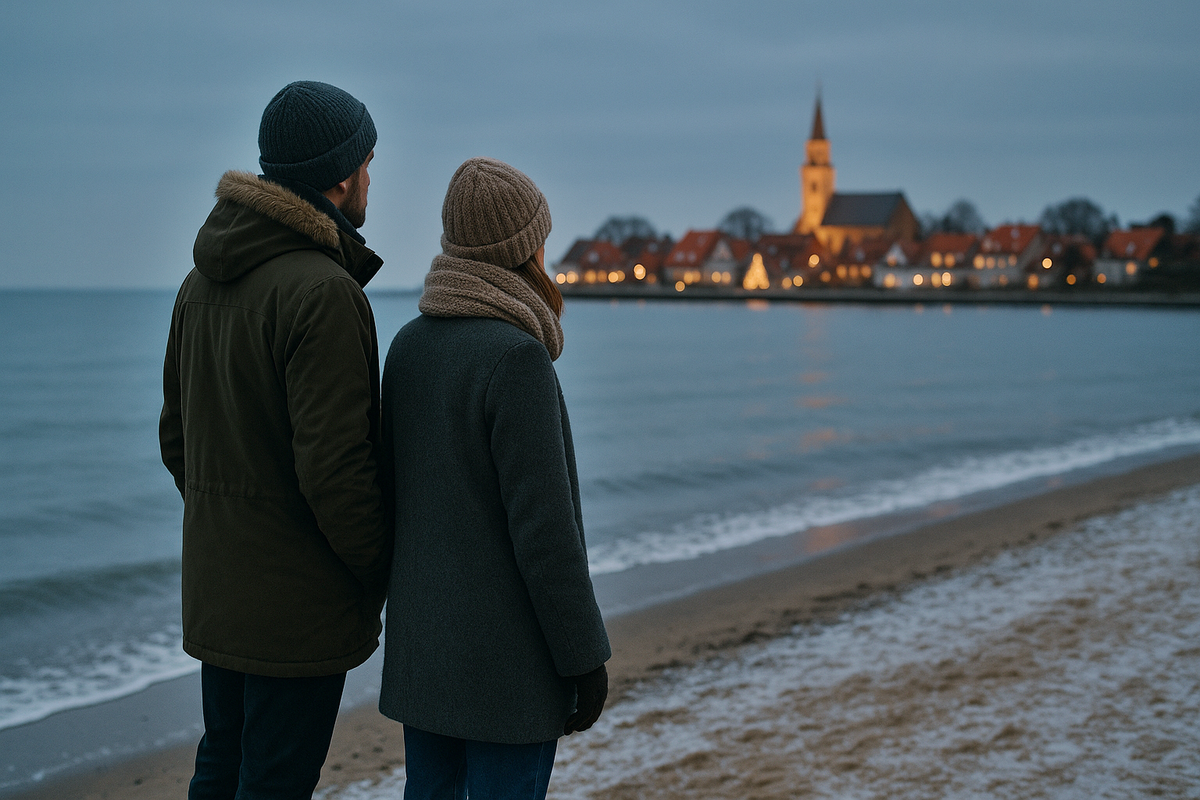
This scenario is especially comfortable if you:
- are tired of big cities and want peace and quiet;
- are ready for short daylight hours and wind, but appreciate the atmosphere and slow walks;
- don't want to complicate logistics by renting a car, but are willing to spend 3-7 hours on a train for a change of scenery.
Ribe — for those who value history and cathedrals.
Ebeltoft — for lovers of creative spaces, museums and a maritime atmosphere.
Skagen — for those who consciously choose the ‘edge of the map’, the sea and winter, rather than Christmas trees and fairs.
The main idea: Christmas in Denmark is not just about the capital. Small towns offer the kind of quiet, intimate holiday that many people go to Scandinavia for — lights in the windows, few activities, lots of fresh air and the feeling that you finally have time to relax.
❓FAQ
✅ If you want to see as much of the ‘old town’ as possible and minimise logistics, start with Ribe: it is compact, atmospheric and the easiest to get to.
✅ It's possible, but the 6-7 hour drive one way makes Skagen a more logical part of a longer route through Jutland.
✅ It's best to leave in the morning before 9-10 a.m. so that you arrive before dark and don't waste the entire first day on the road.
✅ Some cafés and shops may not be open every day, but the main museums, cathedrals and a few tried and tested places to eat are usually open according to the winter schedule.
✅ Yes, with the format of ‘morning travel + full day on site + morning departure’, two nights are enough to take a leisurely stroll, visit museums and not get tired.





0 comments
Log in to leave a comment